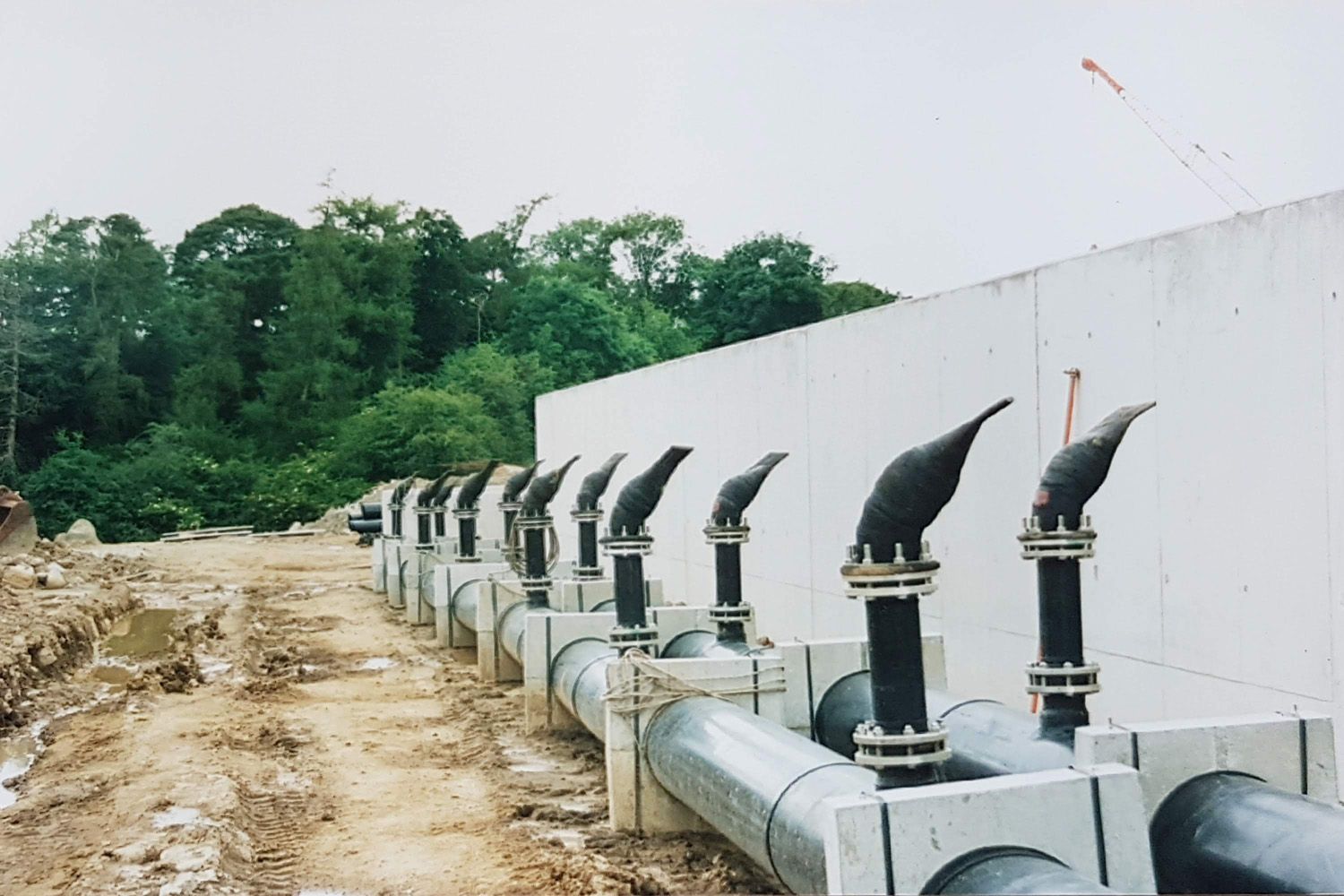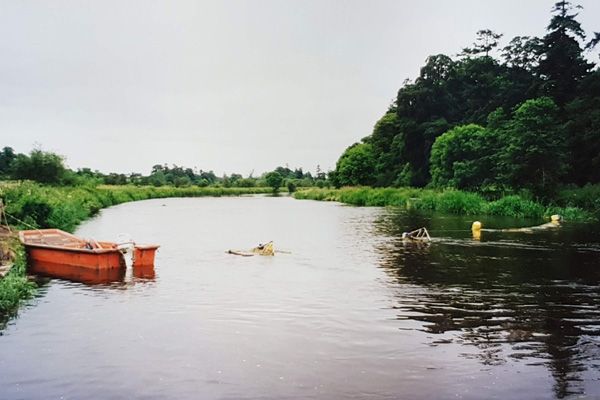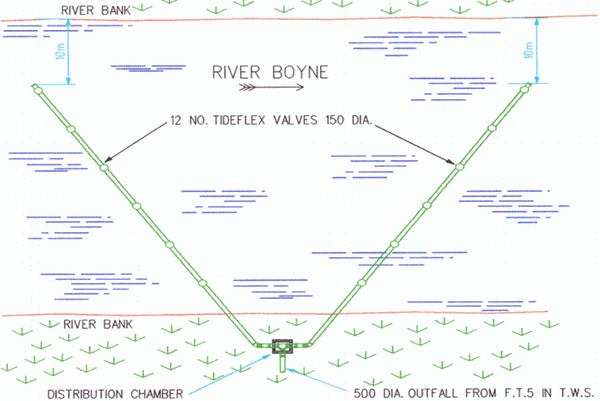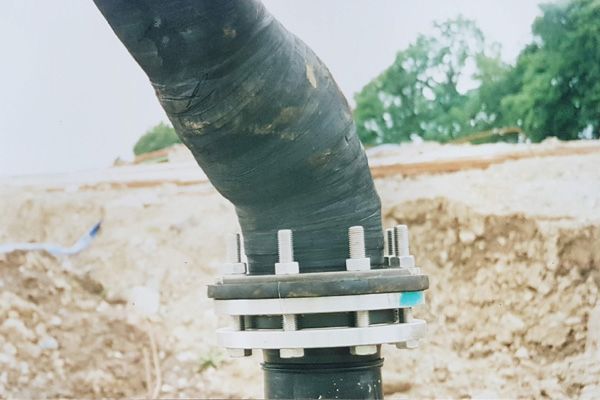The efficient dispersion of the Navan wastewater treatment plant effluent using a Tideflex multiport diffuser system continues to help preserve fish stock in the River Boyne.
Project Details
Client: Meath County Council
Design details: 12No. DN150 Series 35D Tideflex diffuser valves on 2No. 45m long DN500 manifolds


The Problem
The wastewater treatment plant for the Navan agglomeration in County Meath has been in operation since 2001. It has its final effluent discharge outfall into the River Boyne approx. 4 km downstream from Navan. The typical average daily discharge of treated final effluent from this facility is circa. 9,700 cubic metres.
Effective diffusion and dilution of the WWTP effluent is important due to the River Boyne's importance as a potable water source, an amenity and fishing resource. However, at design stage there were concerns about the placement of diffuser valves due to anticipated seasonal low water levels and the fishing activity taking place within the top level of the river.

The Solution
The original outfall design (see above) required that as much of the diffuser system as possible was situated below or close to the river bed - a rather muddy and debris-strewn environment. MeasurIT were able to demonstrate that Tideflex rubber duckbill diffuser valves not only fulfilled the hydraulic requirements, but could also function properly in this location.
Our proposal comprised twelve DN150 Series 35D Tideflex Effluent Diffusers with integral 45 degree wire-reinforced bends and horizontal bills to allow installation well below top water level. These valves were installed on a DN500 manifold of two 45m long pipes laid in a 'Y' formation within the river bed, along with the distribution chamber and outfall pipe.
This system has been operating effectively since 2001, meeting all the EPA discharge license requirement testing with no problems. Tideflex valves provide longterm peace of mind, as usual.

Tideflex Diffuser Valves
Unlike conventional diffusers, Tideflex diffuser valves eliminate potential backflow. Even when buried in sand, silt, mud or sunk in water, these valves can still discharge flow. They do not corrode, warp or freeze and are virtually maintenance free. They handle obstructions without jamming. Due to its flexible nature, the valve collapses around any debris and seals off the backflow. The pressure forcing the lips together puts a squeeze effect on any solids build-up. The valve forms around the obstruction until enough runoff flexes the lips open and flushes the material out.
Tideflex offers two types of diffuser valves - standard (D) and widebill (W) - and within those types there are over 50 different hydraulic variations. The standard diffuser valves look similar to the ordinary valves of the same diameter, but are built to provide specific hydraulic requirements like jet velocity etc. The widebill valves offer superior hydraulic characteristics to the standard diffuser valves - much lower headloss etc. - which means that you can reduce the diffuser port and valve sizes.
The valves can be supplied flanged (S35) or integral with the riser (TF), on their own for assembly by others, or they can be supplied integral with ports or risers. The hydraulic code provided on the Tideflex analysis should then be used on specifications and drawings to ensure that the correct product is ordered.
Find out more on our dedicated diffuser valve page or contact us to discuss your specific requirements.
Navan Effluent Diffuser Preserves Fish Stock